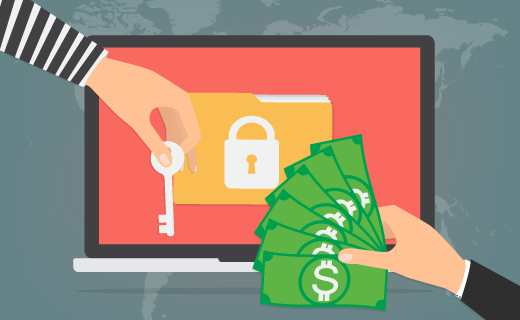
Sure, you’ve heard the phrase “ransomware”, and some of its specific variants like Locky, Crypto, or WannaCry, since they’ve made headlines, but what exactly is “ransomware”? Google defines the term “ransomware” as “a type of malicious software designed to block access to a computer system until a sum of money is paid”. That’s straightforward and concise, but how exactly does it “block access”? In laymen’s terms, it changes the contents of files it thinks are important, like documents, spreadsheets, pictures, so that you cannot open the file. If you want to open the file, you first need to change the contents back to normal. Of course, you can’t change the contents back to normal without paying money to get a password to do so and that’s why it’s called “ransomware”.
So what can you do to combat “ransomware”? First, have a good backup system in place. Make sure you’re backing up important data, if not entire computers/servers, and that you’re testing those backups to make sure they are able to be restored. Second, employ a multi-layered approach to security. Having multiple layers like anti-virus software, firewalls, file permissions, etc helps ensure that even if a malicious actor gets past one layer they won’t necessarily gain access to your data. Third, make sure all your software is up to date. This includes Windows, Office, Adobe products, and anything else that you have installed.
Want to learn more? CBTech Support is hosting a webinar in conjunction with SCORE of Northwest New Jersey at 12:00pm on Wednesday, October 4. To register, follow this link: http://conta.cc/2hjGDkm
